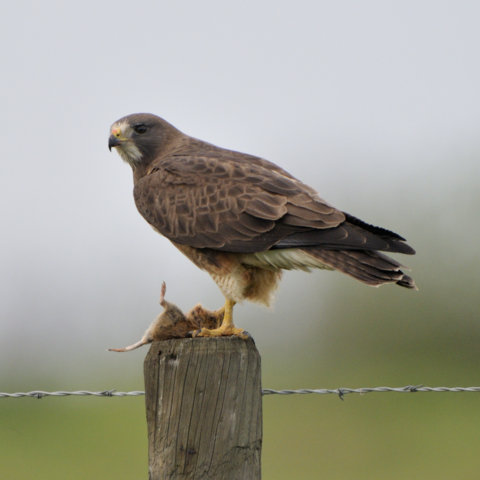Get the lead out!

Lead ammunition is a significant cause of lead poisoning in wild birds, especially waterfowl and raptors:
- Humans face a potential risk of exposure to lead associated with eating wild game killed with lead bullets (CPW “Get the Lead Out”/CDPHE 2008).
- Lead has detrimental effects on the nervous and reproductive systems of mammals and birds.
- Eagles frequently scavenge carcasses of deer, elk and other wildlife that may harbor lead or lead fragments.
- Eagles with lead poisoning may exhibit loss of balance, gasping, tremors and impaired ability to fly.
- Emaciation follows and death can occur within 2 to 3 weeks after lead ingestion.
- Most hunters care about the health of Colorado’s eagles and other wildlife.
- Non-lead bullets are available at most shooting supply stores.
Aiken and Arkansas Valley Audubon purchased over $500 worth of non-lead ammunition and distributed them to Colorado big game (e.g., elk, deer, pronghorn) hunters last fall. This was a joint grant funded by the Audubon Colorado Council with the goal educating hunters on the importance of using non-lead ammunition while hunting big game. Vouchers were distributed to potential hunters in Pueblo and El Paso county for redemption at Sportsman’s Warehouse and Arctic Shooting Supply Company. Surveys were also distributed along with the ammunition to gauge user satisfaction with hunting with non-lead ammunition. For more information on hunting with non-lead ammunition visit the links below.
Project Update
Aiken and Arkansas Valley Audubon purchased 16 boxes of non-lead ammunition (at a cost greater than $500.00) in two different calibers for the Colorado big game season last fall. This was a joint grant funded by the Audubon Colorado Council. Vouchers were distributed to potential hunters in Pueblo and El Paso county for redemption at Sportsman’s Warehouse and Arctic Shooting Supply Company. Surveys were distributed along with the ammunition to gauge user satisfaction with hunting with non-lead ammunition.
This project was designed to increase awareness of the harmful effects of lead ammunition and promote the use of non-lead alternatives for hunting big game. The widespread use of lead ammunition for hunting is likely the largest source of lead in the environment that is unregulated and knowingly introduced into the environment (Group of Scientists 2013; USGS 2013); however, big game hunters have been slow to adopt non-lead alternatives due to cost as well as a lack of awareness of the extent of the problem.
Research illustrates that lead ammunition is a direct threat to both human and bird health. Numerous bird species have been documented ingesting and/or being poisoned by lead ammunition including Bald and Golden Eagles, California Condors, Turkey Vultures, Black Vultures, various species of waterfowl, Mourning Doves, and Northern Bobwhite Quail (USGS 2009). Additionally, studies show that consuming meat from animals hunted with lead ammunition may result in carcass contamination and have potentially negative health consequences when consumed, especially in the young and elderly (Hunt el al. 2009, Lindboe et al. 2012).
By providing hunters with a viable alternative free of charge, Aiken and Arkansas Valley Audubon Societies hope to increase hunter knowledge of lead alternatives while simultaneously demonstrating that Audubon is not an anti-hunter organization.

You must be logged in to post a comment.